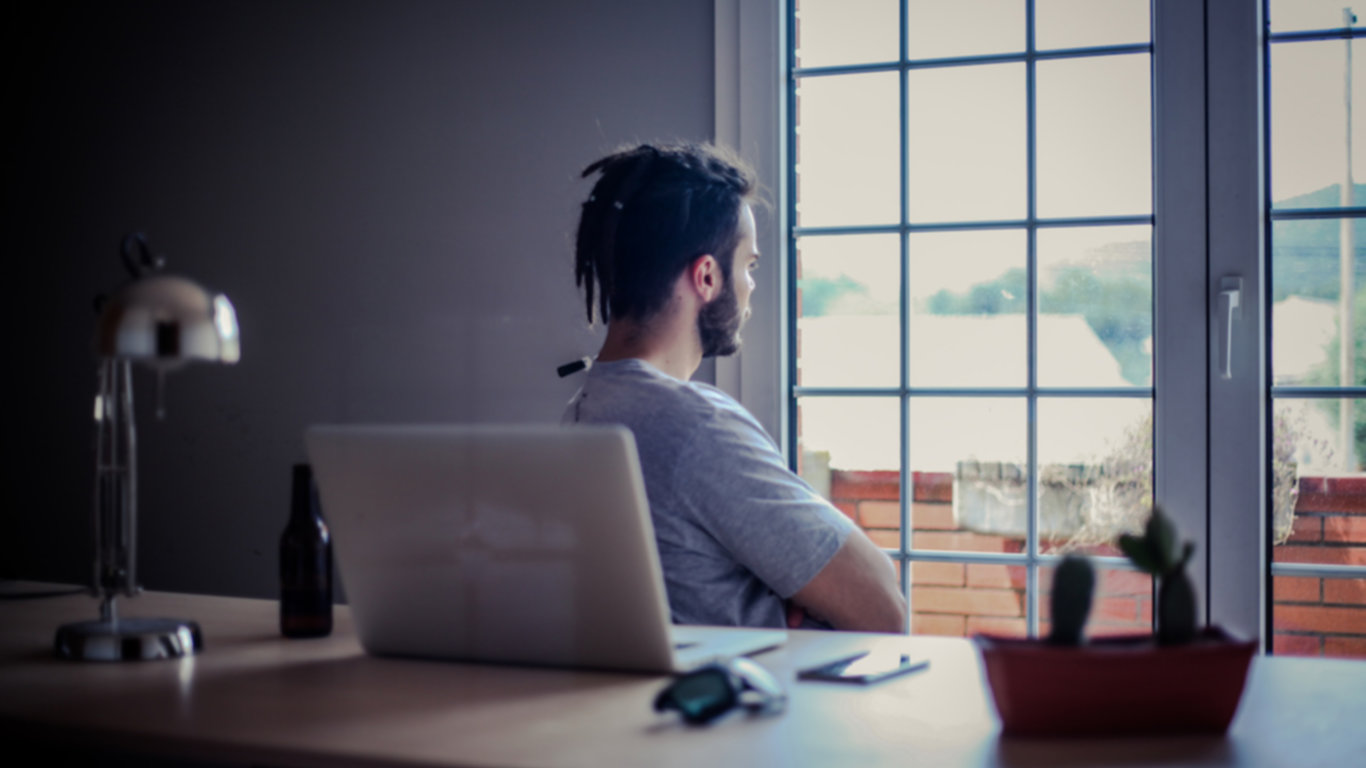
Working in a modern office brings its share of conveniences, but as anyone who sits in front of a desk all day long knows, it’s easy to slide into unhealthy habits. Humans weren’t really designed for sitting in front of desks, staring at screens all day… but that’s exactly what most of us do, 40 hours or more per week.
As developers, we need computers for most of our work, and that usually means sitting in front of one for hours on end, with every little physical activity.
You’ve got to move it, move it
One of the biggest problems of working from a desk is that you don’t get enough opportunities for passive exercise. Take the perennial college job of working in a grocery store as an example - lifting heavy boxes or bags, climbing ladders in the backroom, or just walking around all day - you’ve essentially got a workout built in. Once you’ve traded in your nametag and pulled up a seat in front of a screen, the passive health benefits start to drain away.
One tip that always gets tossed around is the 1/10 rule - for every hour, get up and walk around for 10 minutes. If you work in a bigger office, this one is a little easier to turn into a habit - walk to a coworker’s desk, go hangout near the coffee machine, or take a spin around the breakroom. If you work from home or in a smaller team, use your phone’s timer to set break reminders for yourself. Or if your working hours are flexible, run out to the post office, grocery store, or take a quick walk around the block every two hours or so. In any case, you’re reaping double the benefits from unplugging for just a few minutes - getting a little exercise will also improve your mental clarity, energy, and possibly your overall job performance.
Ergonomics
“Ergonomics” was the buzzword in the office of the early 90s. As computer use became more and more frequent, so too did headaches, backaches, and repetitive strain injuries like carpal tunnel syndrome as the new occupational hazards. The solution? Proper design of things we used everyday, like keyboards, chairs, or computer mice.
Nowadays, there are tons of tools you can buy that claim to reduce repetitive strains with the added benefit of making your workspace a touch more futuristic. The split keyboard and chairs with increased lumbar support and cushioning are becoming more and more popular.
But an ergonomic workspace also means a lot of small, non-obvious adjustments. This might mean the positioning of your keyboard, the height of your computer screen, or the distance between your chair and the screen. No matter how expensive, new, or cool an office gadget might be, there is no magic bullet for solving all the problems that can come from inactivity or odd positioning over so many hours.
A good place to start is doing a full body scan while sitting in your normal position at your desk. How does your neck feel - achy? Tight? Are your legs falling asleep? Any muscle twitches? Tune into where you sense discomfort or repetitive, unnatural movement during daily tasks.
It is super important here to take into account the circumstances of your individual body. A workstation that might work for one person could be totally counterproductive or dysfunctional for someone else. Are you prone to back problems? Taller than most people? You might need to tweak the height of your desk or the tilt of your screen.
Diet
What it is it about working at a desk that utterly destroys healthy diets? If you work in an office with others, the breakroom snacks and lunch dates are obvious culprits. But those who work remotely aren’t immune either - if you regularly work from coffee shops or other coworking style cafes, you know how easy it is to add a not-so healthy treat in with your coffee order.
One way to get started is to get organized about eating. When we’re rushing to work or parked in front of the computer pushing to meet a strict deadline, it’s easy to grab things that will give us a quick boost but that aren’t that great for us. Having a plan for chaotic times is essential, whether it’s sliced fresh fruit in a desk drawer or portion-sized bags of trail mix in your bag. When making dinner, plan to make a little extra and set aside lunch the night before, making sure to tuck in lots of leafy greens and veggies as a side. We all know that processed foods aren’t good for our energy levels or overall health, so making it a habit to keep backups for stressful times is crucial.
Beat the Desk Life
At the end of the day, our productivity is inextricably linked to our health. Especially if you make your own hours as a freelancer or work remotely, the battle for consistency and stability is real. Many times, the first things to get sacrificed are our diet, posture, and other healthy habits. But if you think about it, an investment in your health is an investment in your job satisfaction and ability to get things done.
Besides some of these general tips, here a few actual, actionable things that you can do to fight back against a sedentary lifestyle.
Try
Exercise at Your Desk
This one sounds pretty obvious, but mixing in isometric exercises during your normal work day is a good way to stay fit. Choose one of these isometric exercises and do one during a short break or every hour. If you work in a bigger office and don’t want to break a sweat in public, use mealtimes to take a walk around the block or climb up and down a flight of stairs in your building.
Journaling
There are a million ways to keep yourself accountable to your health goals. If you’re keen on using visuals or like to jot things down manually, check out bullet journaling. The beauty of this journaling system is that it’s endlessly adaptable to different productivity styles and needs. Track meals and snacks, or keep a “health to-do list” the same way you would track work tasks - anything from “drink 8 glasses of water” to “20 push ups.” Then, make it a goal to get through as many as you can.
If you’re not really the artsy type or prefer keeping things all in the cloud, add health reminders to the productivity platforms you already use. There are the old standards, like Evernote, but you can also try the stripped-down Wunderlist. Create a separate list to make sure you step away from the desk, exercise, or grab a quick snack periodically.
Automating It
Use the tools you already have - set a timer on your smartphone or calendar for every hour you’re at your desk (just make sure to for the meetings). Take just a few minutes to get away stretch, drink a glass of water, walk around, or do a few crunches. By essentially making an appointment with yourself, you increase the odds that you’ll stick to any health plan. You can also go with some time-boxing techniques like Pomodoro to ensure you take regular breaks between your tasks.
Meditating
Meditation improves not only your mental health, but also gives your eyes a rest and gives you a chance to check in with your body. If you find yourself hunching over the computer, take just 5 or 10 minutes to close your eyes, relax, and focus on your breath. Try doing a body “scan” - just practice observing your body and your posture, and make adjustments (relax your shoulders, roll your wrists) if you notice discomfort anywhere.
Working Smarter
If you don’t always work in front of a computer, try re-organizing your daily routine so that your time at the computer is periodically broken up by other tasks. Batch similar tasks, like tracking your invoices or testing code, and then time yourself. If you feel like you’re getting sucked into the computer chair at the end of an hour, stand up and do a few stretches. Walk to a coworker’s desk to have a quick chat instead of a text, or place your printer or other devices across the room so you have to get up in order to do certain tasks.
Working smarter also means streamlining your work process to minimize the time you’re in front of the screen overall. Evaluate the tools or software you use to get things done, and change things up if necessary. If you’re a writer and need a clean, distraction-free interface for getting creative or just taking notes, try chilled out OmmWriter. Or if you need a way to stay organized while doing web development work, try a text editor that streamlines the process with Vim (here’s a few reasons to love it).
Buy
A New Workspace
Standing desks are the hot new trend in startup office management (first they came for our cubicles, now it’s our chairs). Fans of standing desks (or other chairless workspaces like the “treadmill desk”) point to their benefits, like increased circulation and calorie burning - some go so far as to say that “sitting is the new smoking.” Lifehacker’s guide to standing desks is a good place to start exploring your options. If getting a new desk is out of the question (or your budget), exercise balls and other “dynamic seats” are great for encouraging a more healthy seated posture.
The key with any workspace is to make sure it fits you as an individual. The cumulative effects of small movements, like pushing your neck forward to read your screen or overextending your wrists while typing, can negatively impact other parts of your body and cause spinal misalignments and muscle strains. Make sure you consider every area in your workspace by checking this doctor-approved guide.
Split Keyboards
Generally, a good keyboard should mirror the way you actually hold your hands while you type. Split keyboards divide the keys between the hands, and usually are curved or tilt the keys inwards, supporting optimal wrist position. Negative tilt (where the bottom of the keyboard is pointed down towards you) also combats repetitive wrist strains. Broad, curved wrist supporters on Microsoft models are good if you’re on a budget. Or check out the ErgoDox, a blowout success on Kickstarter - each keyboard can be engineered and customized to every user, with key switches specifically designed for developers, writers, and anyone else who lives in front of their computers. You can also take a look at ErgoDox EZ for pre-assembled keyboards.
The End
Though it’s difficult to put into practice, getting active is especially important for those that work in front of screens (which is honestly most of us nowadays). Working in a few exercises or updating our gear is ultimately an investment in our productivity and overall happiness - and at the end of the day, that’s really what it’s all about.





